Rutilated Quartz
Rutilated Quartz is an interesting variant of Quartz, heavily included with golden needle-like sprays of Rutile (Titanium). As Quartz can naturally occur quite clear, this can make a gorgeous display piece.
Most people refer to this material as Rutilated Quartz, although arguably a more correct term would be ‘Rutile in Quartz’ or ‘Rutile included Quartz’.
This material is almost always sold polished, to give you a better view of the insides of the crystal. Tumblestones are a very popular method of polishing it, but I have seen quite a lot of cut and polished eggs, crystal balls, etc. Rarely, it is cut for jewellery; I have a few cabochons but they are not common.
Showing all 11 results
-
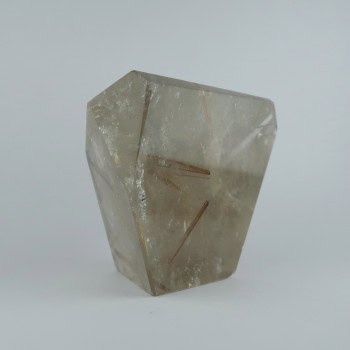
Polished Quartz freeforms (Rutilated/Smoky)
Price range: £10.00 through £15.00 -
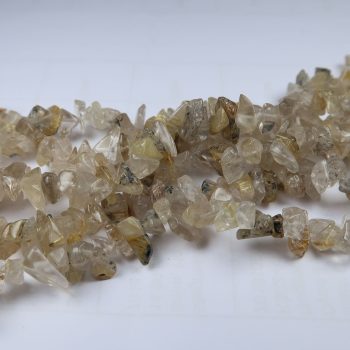
Quartz bead strands (Rutilated)
£5.00 -
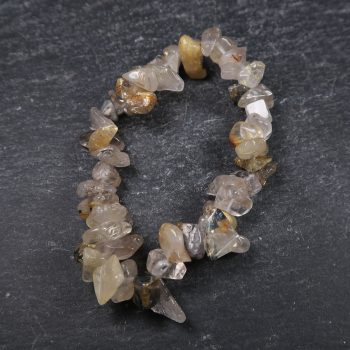
Quartz bracelets (Rutilated)
£1.95 -
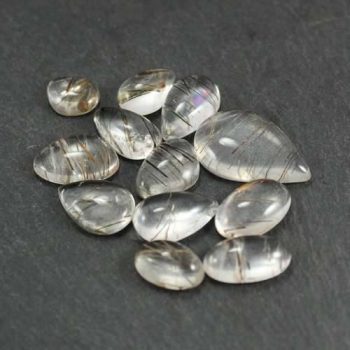
Quartz Cabochons (Rutilated)
Price range: £3.00 through £9.00 -
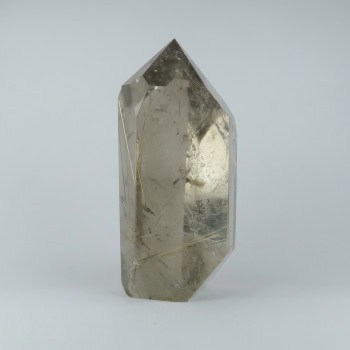
Quartz obelisks (Rutilated/Smoky)
Price range: £12.50 through £15.00 -
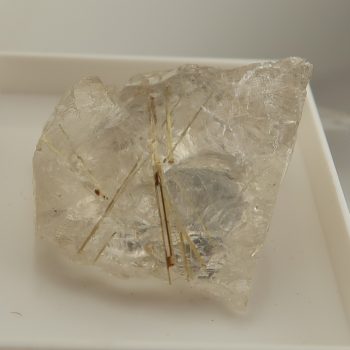
Quartz Specimens / Rough (Rutilated)
Price range: £3.50 through £10.00 -
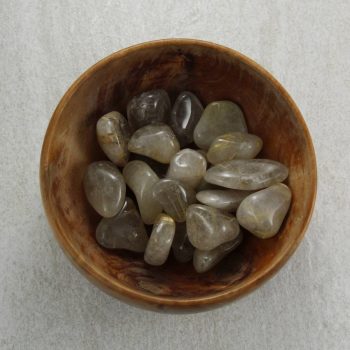
Quartz Tumblestones (Rutilated)
Price range: £1.65 through £3.00 -
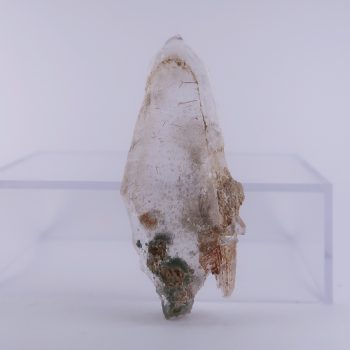
Rutile and Quartz from Saurüssel, Austria
£15.00 -
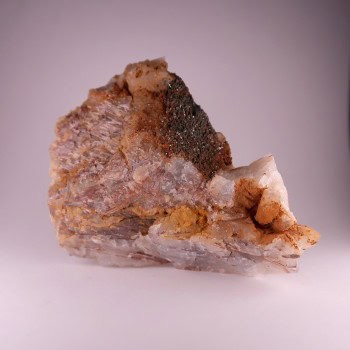
Rutile from Lochan na Lairige, Scotland
£35.00 -
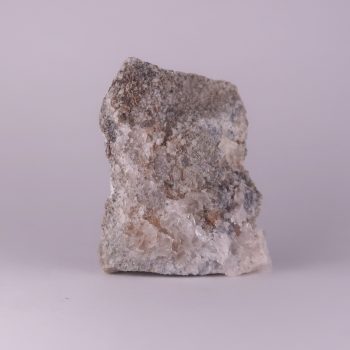
Rutile, Hematite, and Quartz from Kongsli, Norway
£20.00 -
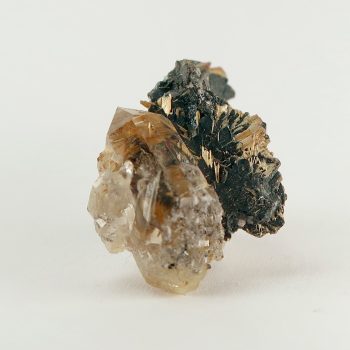
Rutile, Hematite, and Rutilated Quartz from Novo Horizonte, Brazil
£250.00
Appearance, Uses and History
Rutilated Quartz is a gorgeous mineral, specifically a type of clear Quartz with a number of inclusions of Rutile. The rutile needles have a rich golden colour against the clear Quartz and make this an outstanding but still reasonably priced specimen. It is one of the few minerals where inclusions are considered desirable – often stones are prized for their perfection.
The primary use for this material is decorative; it is often cut into cabochons or beads for jewellery making, or polished into eggs, palmstones, or spheres.
One mistake that is often made is to consider any Quartz with needle-like inclusions to be ‘rutilated’; this is not accurate. ‘Black Rutilated Quartz’ is likely to be Tourmaline included, rather than Rutile included; as with other colours. Inclusions of Tourmaline, Actinolite, Dumortierite etc may look very similar to beginners to mineral collecting but the distinction must be clear.
Locales
The majority of the Rutilated Quartz sold online comes from Brazil, but fine specimens have been found in Australia, Austria, Pakistan, Russia, and the USA.
Mineralogy
Hazards and Warnings
Almost all rocks, minerals (and, frankly, almost all other substances on earth) can produce toxic dust when cutting, which can cause serious respiratory conditions including silicosis.
When cutting or polishing rocks, minerals, shells, etc, all work should be done wet to minimise the dust, and a suitable respirator or extraction system should be used.
Translations
As there is a good chance that the word ‘rutilated’ will not translate well to other languages, I have included translations for ‘rutile in quartz’ and ‘rutile included quartz’.
Arabic:
- خراب کوارٹج
- کوارٹج میں روٹیل
Hindi:
- रुटीलेटेड क्वार्ट्ज
- क्वार्ट्ज में रूटाइल
- रूटाइल में क्वार्ट्ज शामिल था
Portuguese:
- quartzo rutilado
- rutilo em quartzo
- quartzo incluído rutilo
Bengali:
- রুটিলেট কোয়ার্টজ
- রুটাইল কোয়ার্টজ অন্তর্ভুক্ত
Indonesian:
- rutil di kuarsa
- rutil termasuk kuarsa
Punjabi:
English:
- rutilated quartz
- rutile in quartz
- rutile included quartz
Italian:
- quarzo rutilato
- rutilo in quarzo
- rutilo incluso quarzo
Russian:
- рутилированный кварц
- рутил в кварце
- рутил включен кварц
French:
- rutile en quartz
- rutile inclus quartz
Japanese:
- ルチルクォーツ
- クォーツのルチル
- ルチル入りクォーツ
Spanish:
- cuarzo rutilado
- rutilo en cuarzo
- rutilo incluido cuarzo
German:
Korean:
- 석영의 금홍석
- 루틸 포함 석영
Thai:
- ควอตซ์ไหมทอง
Gujurati:
- રુટિલેટેડ ક્વાર્ટઝ
Mandarin and Traditional Chinese:
- 金红石石英
- 石英金紅石
- 石英金红石
Urdu:
